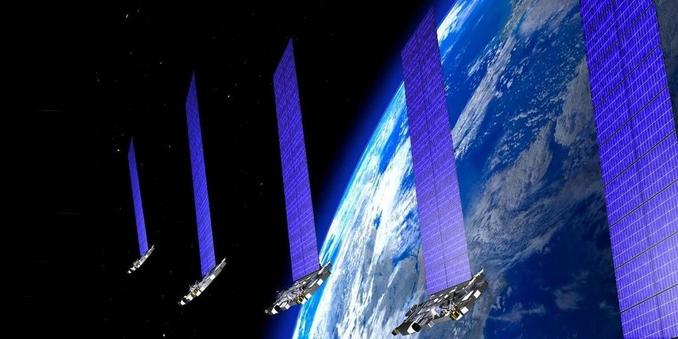Study: The ozone hole is healing, thanks to global reduction of CFCs
https://news.mit.edu/2025/study-healing-ozone-hole-global-reduction-cfcs-0305
#ycombinator #MIT_EAPS #Susan_Solomon #Peidong_Wang #atmospheric_chemistry #ozone_hole #Montreal_Protocol #Antarctic_ozone #ozone_depleting_substances #chlorofluorocarbons
#chlorofluorocarbons
There's a natural variation in ozone in the atmosphere, but CFCs and other substances were reducing ozone levels and expanding the seasonal ozone holes over the poles. The problem was real and it was getting worse, because CFCs were produced for a reason: It was really useful and cost-effective stuff.
Banning ozone-depleting substances for use as coolants, fire supressants, aerosol propellants and other applications was very successful, and after four decades we are now more than halfway to recovering to natural ozone levels.
A few years ago there was briefly some illegal production of CFCs, which halted the recovery, but it was tracked down and halted, and we are back on track.
nasa.gov/missions/aura/nasa-st…
bbc.com/news/science-environme…
en.wikipedia.org/wiki/Ozone_de…
#OzoneLayer #OzoneDepletion
#OzoneDepletingSubstances #ODSes
#chlorofluorocarbons #CFCs
Humanity's #satellite habit could end up choking Earth's #ozone layer
Just when you think we've solved #chlorofluorocarbons
Large numbers of low Earth orbit (#LEO) #satellites such as those operated by #Starlink could pose a threat to the planet's #ozonelayer once they re-enter the atmosphere and burn-up. Researchers at University of Southern California (USC) say that this leads to the generation of aluminum oxides in the #atmosphere, known to accelerate ozone depletion.
https://www.theregister.com/2024/06/25/satellite_reentry_ozone/
Je mehr Wärmepumpen wir aufbauen, desto mehr haben Lecks. Gilt auch für Windkraftwerke.
https://www.space.com/ozone-hole-antarctica-three-times-size-of-brazil #chlorofluorocarbons #cfcs #sf6 #r32
"A Mysterious Rise in Banned Chemicals Is Warming the Planet
A new study documents the mysterious presence of five banned chlorofluorocarbons, chemicals that not only deplete the ozone layer but also contribute to global warming
Five ozone-depleting substances are increasing in the atmosphere, a new study finds, despite an international ban on their use and production.
The discovery has mystified scientists and alarmed them because the substances are warming the planet. Their climate impact is equivalent to the carbon emissions from a small country.
“We don’t really know where it’s coming from, and that’s really a bit scary,” said study co-author Stefan Reimann, a scientist with the Swiss Federal Laboratories for Materials Science and Technology, at a news conference on Monday."
Australia's Massive Wildfires Shredded the Ozone Layer--Now Scientists Know Why
Massive wildfires that raged across southeast Australia in 2019–20 unleashed chemicals that chewed through the ozone layer, expanding and prolonging the ozone hole.
A study, published today in Nature, describes how smoke combined with chlorine-containing molecules in the stratosphere — remnants of chemicals that are now banned — to cause the destruction.
The Australian fires produced the largest smoke plume on record, releasing roughly one million tonnes of smoke to heights of up to 30 kilometers.
That’s well into the stratosphere, the portion of the atmosphere that contains the ozone layer, which protects Earth from harmful ultraviolet rays, says study co-author Kane Stone, an atmospheric chemist at the Massachusetts Institute of Technology (MIT) in Cambridge.
In the months after the wildfires, the hole in the ozone layer, which appears annually over Antarctica, was larger and lasted longer than in previous years.
About 80% of the chlorine in the atmosphere is a legacy of #chlorofluorocarbons, chemicals used in aerosol sprays and as refrigerants starting in the 1930s.
Their use has mostly been phased out since an international treaty was implemented in 1987. Remnant chlorine is bound up as #hydrochloric #acid and #chlorine #nitrate, which are harmless to the ozone layer.
But when #hydrochloric #acid dissolves in #water droplets, it forms reactive ozone-depleting molecules.
That doesn’t usually happen away from the poles, because the air is too #warm, says Stone.
The team used a computer model to predict how various organic acids contained in smoke particles would alter the solubility of hydrochloric acid.
The changes produced in the simulations mirrored the changes to stratospheric chemistry that were observed after the fires.
Solomon says that #hydrochloric #acid latches onto the #surface of the #smoke #particles and reacts with other molecules to produce #molecular #chlorine, which is broken down in sunlight to highly reactive ‘ozone-eating’ chlorine #ions.
#EnvironmentScienceNews
The #UN 🌎 🌐 has announced that the #chlorofluorocarbons #CFC caused hole in our ozone layer has finally begun to heal‼️ They estimate it should be closed in 2066.
#GoodNewsForNature
https://phys.org/news/2023-01-ozone-layer-hole.html
This was a huge international feat and proves that the planet can come together to fix our mistakes. Here are the details how our planet did it.
#WinWinForNature 🙌
https://phys.org/news/2023-01-ozone-layer-slowly-hole.html
